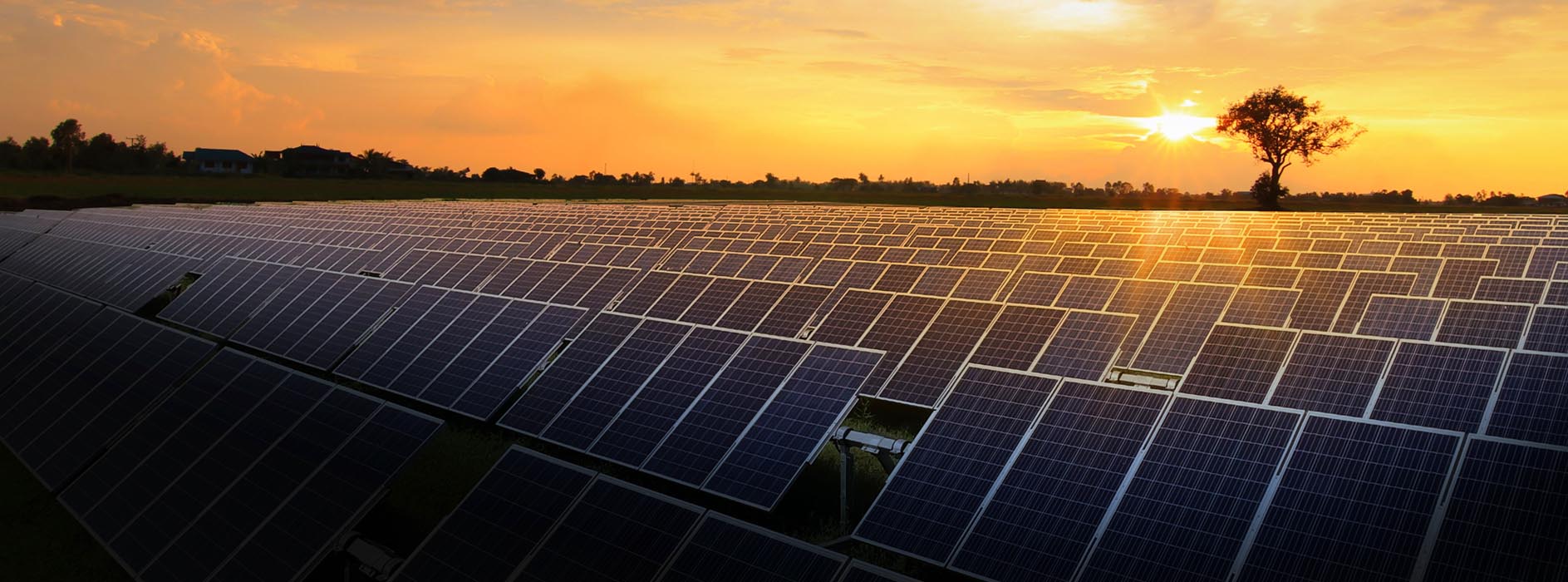Walking on sunshine

Solar farm developments
There are many tax and legal considerations to be aware of when negotiating a lease with a solar-farm developer. Landowners should ensure that they sign up to a lease with the most favourable terms, warns Aisling Meehan.
From a landowner’s point of view, the development of a solar farm on part of their farm can be a highly profitable use of land. However, landowners are often unaware of the obligations imposed on them, and the implications that may arise.


The range of legal documents governing the relationship between the landowner and the solar-farm development company can vary, depending on the company involved, but generally involves some or all of the following:
Exclusivity agreement: this is usually a short document that gives exclusivity to a particular developer for a short period, typically 12 months. The purpose of the agreement is to enable the developer to conduct a feasibility study on the land to see if the project is feasible.
The agreement typically covers such items as an exclusivity period, a right to access lands and authority to apply for permissions, obligations on each party during the exclusivity period, confidentiality, binding status, and governing law and jurisdiction. The developer would generally also request the landowner to sign a landowner consent form to enable the developer to apply to ESB networks to obtain the grid connection and secure capacity.
Heads of terms agreement: the heads of terms may be incorporated into the exclusivity agreement or may be a stand-alone document. Heads of agreement are generally not legally binding – they only mean a moral commitment.
The only terms that are normally binding are those relating to confidentiality, costs, exclusivity, and governing law and jurisdiction. Non-binding terms relate to the nature of the deal/transaction, price or payment or form of consideration, the timetable, details of any conditions, and due diligence.
Option agreement: the option agreement is legally binding and can tie the landowner to a 35-year lease, so a landowner should ensure that they are fully appraised of all legal and tax aspects before signing up to such an agreement. It gives the developer the option to require the landowner to enter into a pre-agreed lease.
The payment to the landowner for granting the option can vary from between €1,000 to €10,000. The terms of the option agreement and the lease agreement are normally negotiated at the same time, with the proposed lease being attached to the option agreement. The option agreement essentially confirms the landowner's acceptance in principle to having rows of photovoltaic (PV) modules erected on their land.
It allows the developer to enter the landowner's property to carry out research, including environmental impact studies, which will be required for planning applications. The option is normally granted for a term of five to seven years, with a right of renewal, and the landowner should ensure that there is provision in the agreement for a further payment for extending the option agreement.
The option is generally triggered when the developer obtains planning permission for a minimum number of PV modules and obtains a connection to the national grid. If the development cannot go ahead, the option is not exercised and the lease does not become operative.
The benefit of the agreement is normally assigned by the initial developer to another development company once planning permission has been secured. This can usually occur without the consent of the landowner, provided that the new developer enters into a deed of covenant with the landowner to continue to observe and comply with the obligations of the initial developer.
Lease agreement: the lease agreement is typically for a term of 25 years, with a right to extend for a further five to ten years. It is important to identify precisely the area of land to be leased, as the developer will seek to include as much land as possible at the option-agreement stage and to drop land at a later point when the lease is triggered, depending on where they get the permission for the solar farm.
The developers will also seek to retain land for the purpose of creating wayleaves/rights-of-way in order to access other adjoining landowners’ lands being used for the construction of PV modules, so landowners should be careful not to leave themselves open to be used as a gateway for the construction of a solar farm on an adjoining landowner’s land.
The lease may also provide for a right for the developer to mortgage or charge the lease as security for monies owed by the developer without any consent from the landowner. However, the lease normally provides that notice be given to the landowner within a month of the transaction of every change in ownership of the lease or any mortgage or charge.
The lease should also include provisions if the developer is struck off the register of companies or goes into liquidation or has a receiver appointed, wherein the landowner should be entitled to terminate the lease but without prejudice to any rights or remedies he may have in respect of a breach of any of the developer’s obligations contained in the lease.
However, the landowner may be restricted in terminating the lease by having to consult with a charge, for example, a bank that may have a mortgage/charge affecting the developer's interest in the lands. The landowner may also be obliged, by the terms of the lease, to allow the receiver/liquidator a period of time (for example, 18 months) to sell the developer's interest in the lease.
The lease should also include a comprehensive clause dealing with how the property is to be reinstated at the end of the lease. The lease normally provides that the developer would, within 12 months of the end of the lease, remove such equipment as is above ground level, including the removal of foundations, hard standings, roadways or tracks, but excluding all items one meter or more below ground level.
Furthermore, the developer should be obliged to reinstate the property to a reasonable soil depth to allow normal agricultural use, as far as used for agricultural purposes, immediately prior to the first day of the lease.
Won’t let the sun go down on me
The landowner (parent) can normally avail of retirement relief to avoid having to pay capital gains tax on a transfer of the farm to the next generation. To qualify for the relief, the owner has to be 55 years of age or over and have owned and farmed the land for ten years prior to the transfer.
The entitlement to retirement relief will not be affected by the fact that solar panels are installed on land that is suitable for farming, provided the area of the land on which the solar panels are installed does not exceed half the total area of the land concerned.
If it does exceed half of the area, the amount of land being transferred may have to be assessed to ensure that retirement relief does apply. Alternatively, the land could be left under a will as, generally, no CGT arises in circumstances where land is inherited under a will.
Capital acquisitions tax agricultural relief: land on which solar panels are installed is regarded as agricultural land for the purposes of the definition of agricultural property, provided that the area of land occupied by the solar panels and ancillary equipment does not exceed half of the land comprised in the gift or the inheritance. Thus, again, it could affect how the land is to be transferred to ensure that over half of it is not covered by solar panels.
Active farmer test: for gifts or inheritances taken on or after 1 January 2015, the beneficiary must also pass the ‘Active farmer test’ – that is, farm the land themselves for six years from the date of the gift/inheritance or lease to a ‘farmer’.
The ‘active-farmer' requirement will be met where a beneficiary leases land for the installation of solar panels, provided that:
- Not more than half of the land comprised in the gift or the inheritance is occupied by the solar panels and ancillary equipment, and
- The beneficiary actively farms the land not occupied by solar panels, or leases it to a lessee who will meet the active-farmer requirements.
Where a beneficiary has leased land for the installation of solar panels and both of these conditions are met, the beneficiary will be treated as having leased the “whole or substantially the whole” of the agricultural land, even though a lesser amount has actually been leased , and the lessee will be regarded as having met the 'active-farmer’ requirements in respect of the land occupied by the solar panels.
Brass in pocket
Income-tax relief for long-term leasing of land relieves the amount of income tax a landowner will have to pay, depending on how long they lease the land. For example, a lease of land for five years will exempt up to €18,000 in rent and Basic Payment Scheme (BPS) entitlements per annum. The longer you lease it, the more relief that applies.
To qualify for the relief, the person leasing the land (lessee) is required to use the farm land “for the purpose of a trade of farming”. ‘A trade of farming’ means that the lessee is required to farm the land on a commercial basis and with a view to the realization of profits.
Therefore, unless the solar-energy company can demonstrate that they are carrying on two distinct commercial activities, that is, the solar-panel activity and a farming activity, and that the farmland is wholly or mainly occupied for the purpose of husbandry, a lessor who leases out his/her land to a solar-energy company would not be entitled to the income-tax relief in such circumstances.
Running up that hill
While cases involving solar panels will be examined on an individual basis, it is currently envisaged that the area covered by the solar panels will be deemed to be ineligible for the purposes of claiming BPS. Furthermore, in line with the Department of Agriculture, Food and the Marine’s current approach on land eligibility, where the area of a parcel covered by solar panels is 70% or greater of the overall parcel, that parcel will be wholly ineligible.
If less than 70% is covered by solar panels, and the agricultural activity is not hampered by the presence of the solar panels, the area not covered by solar panels may be eligible. With regard to entitlements, it is important to remember that a farmer must use all the entitlements every two years. Therefore, if the land is deemed ineligible for the BPS, the farmer would lose the entitlements after two years, unless he/she (a) got more land, (b) leased out his/her entitlements, or (c) sold the entitlements .
It is clear from the foregoing that there are many taxation and legal considerations to be aware of in negotiating a lease with the solar-farm developer. There is a standard lease used by each solar-farm developer, and landowners should ensure that they sign up to the lease with the most favorable terms as a whole, rather than the developer paying the highest rent.
Aisling Meehan is a solicitor, tax consultant, and farmer specializing in agricultural law and tax. Aisling Meehan Agricultural Solicitors is also a corporate member of the Irish Solar Energy Association.
This article is intended as a general guide only, and professional advice should be sought in all cases. This paper was compiled on the basis of information available on 8 November 2022. While every care has been taken to ensure the accuracy of information contained in this article, the author and/or Aisling Meehan Agricultural Solicitors does not accept responsibility for errors or omissions however rising
Read and print a PDF of this article here .